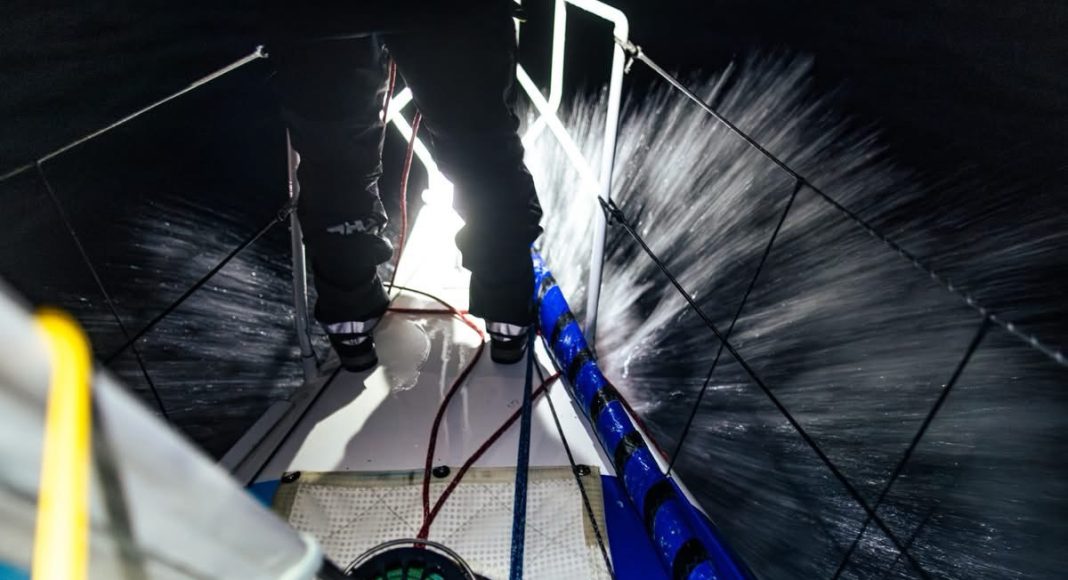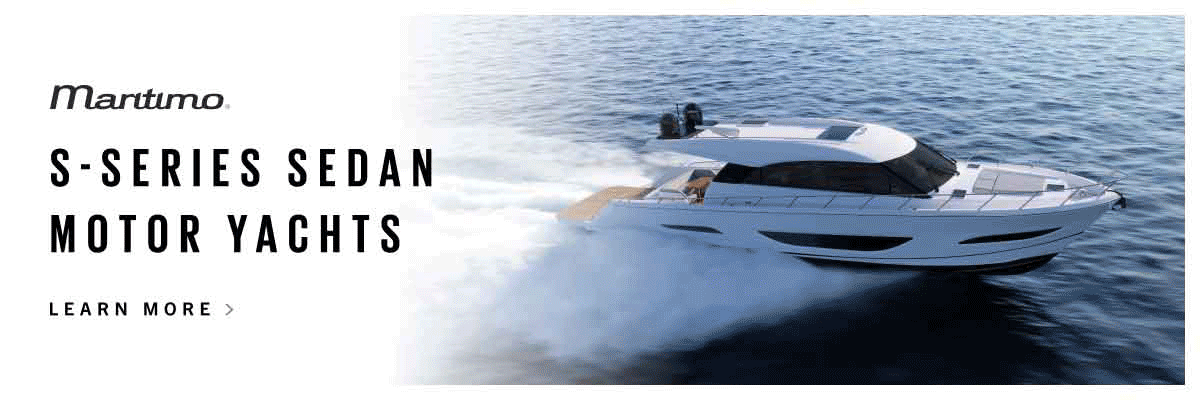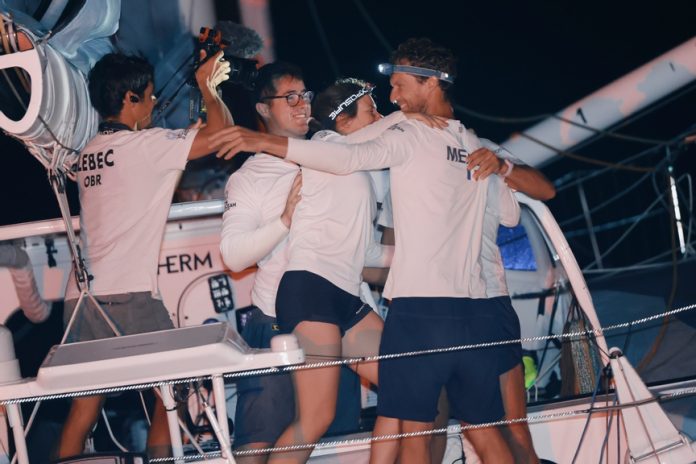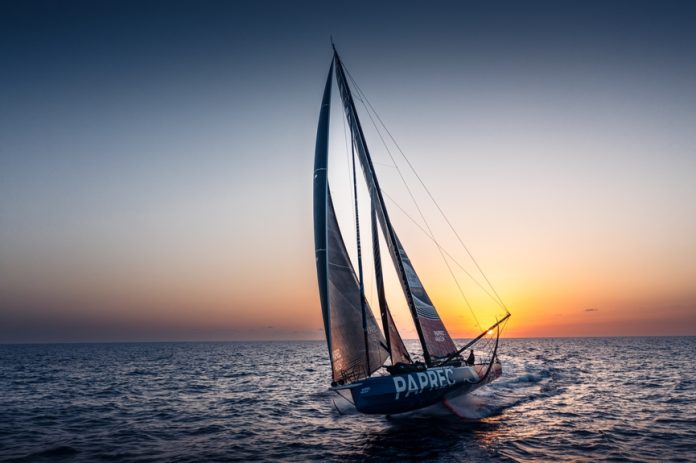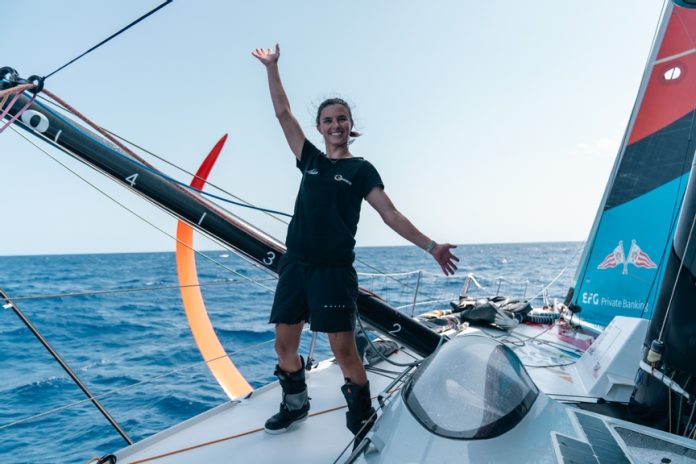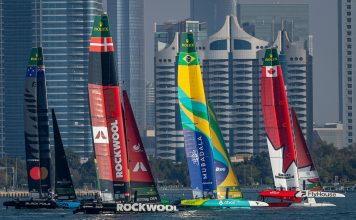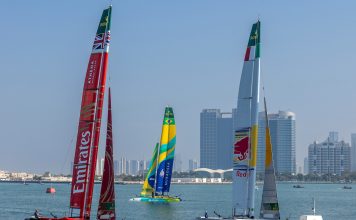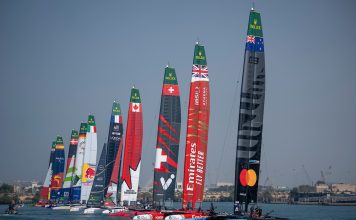From a high-octane start in Kiel to a windless tactical grind, the IMOCA fleet in Leg 1 is showing equal parts grit, patience, and offshore seamanship.
The first leg of The Ocean Race Europe 2025 has been a race of contrasts. From the adrenaline of high-speed foiling in the Baltic to the slow-burn tactical battle in the North Sea, the top five boats still racing south towards Portsmouth have faced a true offshore test — equal parts speed, patience, and problem-solving.
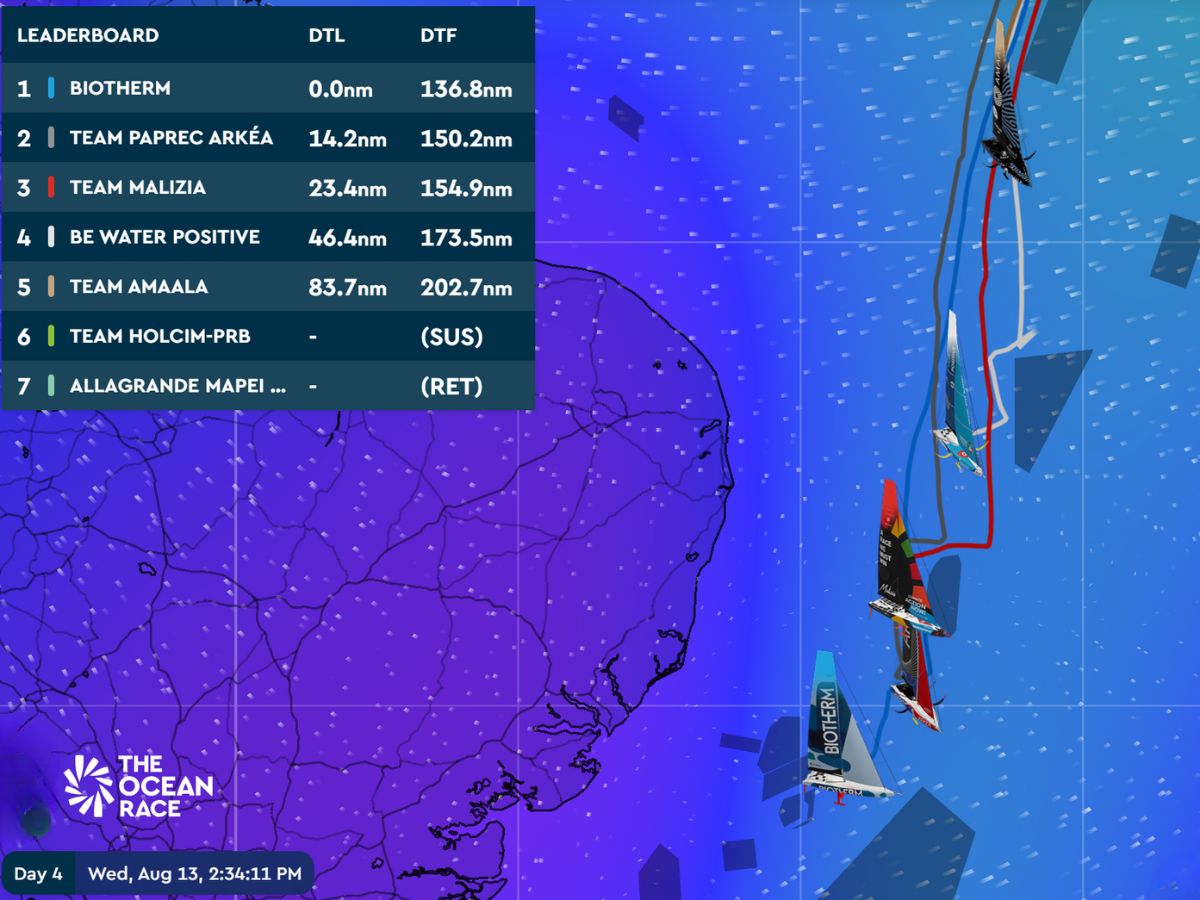
A flying start from Kiel
When the IMOCA fleet left Kiel on 10 August, the scene could hardly have been more perfect for fans. A fresh westerly, a packed spectator fleet, and the sharp snap of sails filling had the teams pushing their foils hard from the gun.
Biotherm, skippered by Paul Meilhat, made the best of it. They crossed the Kiel Lighthouse scoring gate first to bank two bonus points, then traded tacks with Paprec Arkéa in the opening miles along the Danish coast. “We were close to the shore, dodging traffic and buoys, and the wind was all over the place,” recalled trimmer Amélie. “Not much rest — just short naps and constant trimming.”
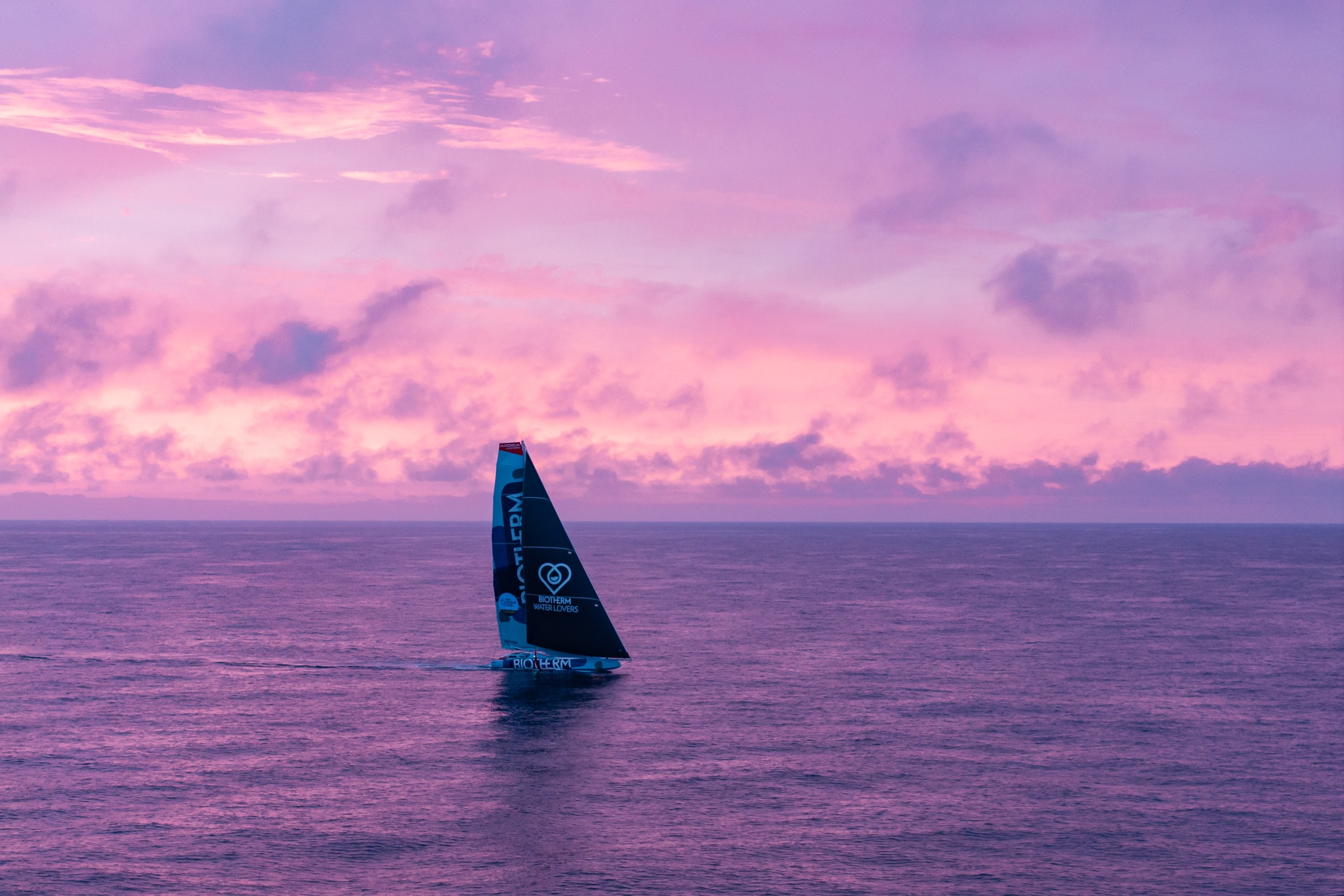
Paprec Arkéa, with skipper Yoann Richomme and crew Corentin Douguet, Mariana Lobato, and Pascal Bidégorry, crossed the same gate in second for their own bonus point. “The start was super intense,” Richomme admitted. “We used a lot of energy in those first hours.” Lobato agreed: “It was nicer in the 20 knots at the start, but we’re pressing on — Biotherm is just ahead.”
Team Malizia – Seaexplorer also started strongly, with Boris Herrmann noting Paprec Arkéa just ahead near a lighthouse in flat, calm water. “A beautiful morning,” he said, even if his off-watch coincided with a patch of zero wind.
Behind them, Canada Ocean Racing – Be Water Positive, skippered by Scott Shawyer, flew past the Great Belt Bridge in Denmark at speeds touching 30 knots. Team Amaala, led by Swiss skipper Alan Roura, relished the opening blast in over 20 knots — “one of the most beautiful starts I’ve had the privilege to experience,” said Roura.
Baltic exit and first transitions
The fleet stayed close through the Danish islands, with Biotherm edging ahead as they set up for the jump into the North Sea. Paprec Arkéa clung to second, keeping Biotherm in sight, while Malizia enjoyed a stunning sunrise before the breeze returned. Amaala worked through a night of tacks in over 20 knots, staying with the fleet before conditions began to soften.
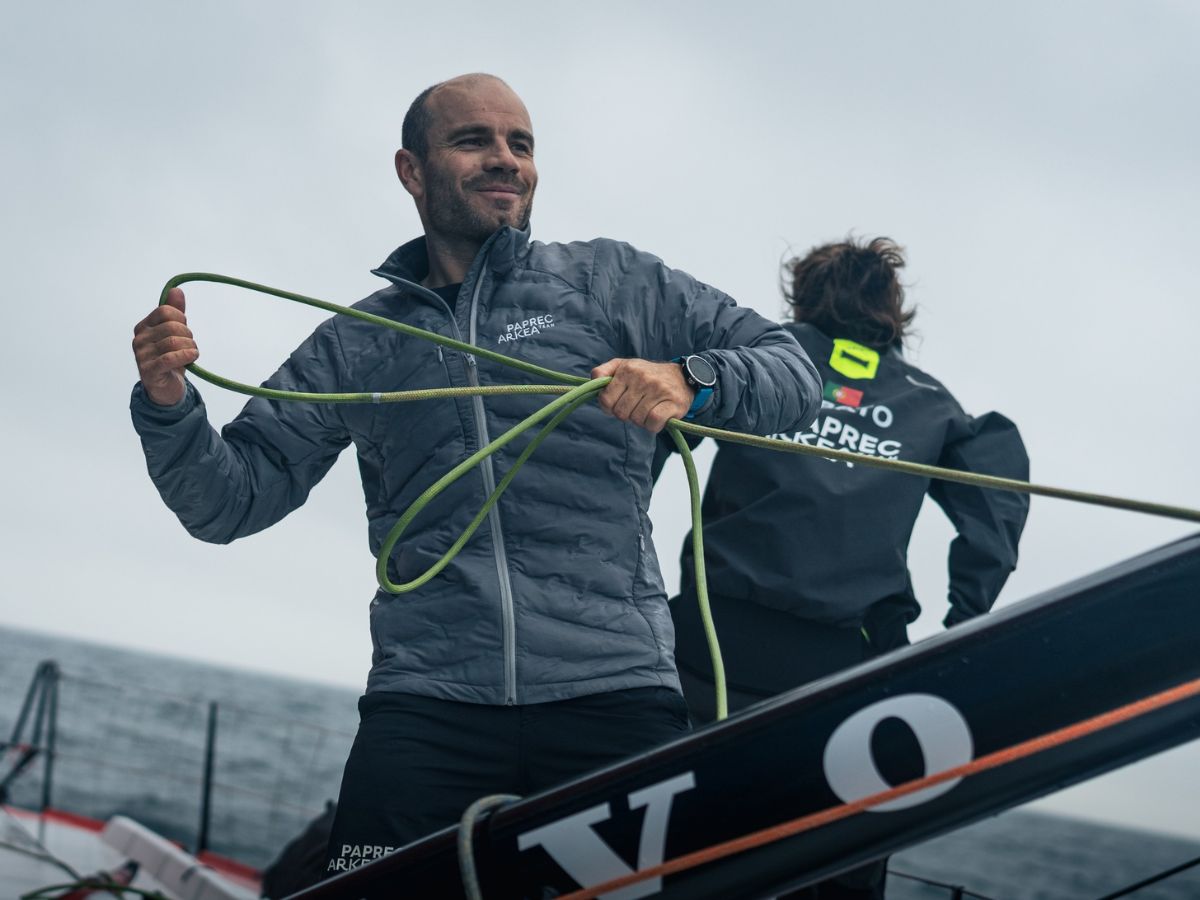
The ridge closes in
By the morning of 12 August, the race dynamic had shifted completely. The fleet sailed into a high-pressure ridge — a wide swath of calm air that sprawled across the North Sea. Meteorologist Christian Dumard summed it up: “The high-pressure system has expanded, creating a ridge. As the boats move south, the westerly wind is weakening.”
At the 0800 position report, Biotherm was 8 miles clear of Paprec Arkéa, with Malizia 14 miles back. Canada Ocean Racing trailed by 41 miles, Amaala by 64.
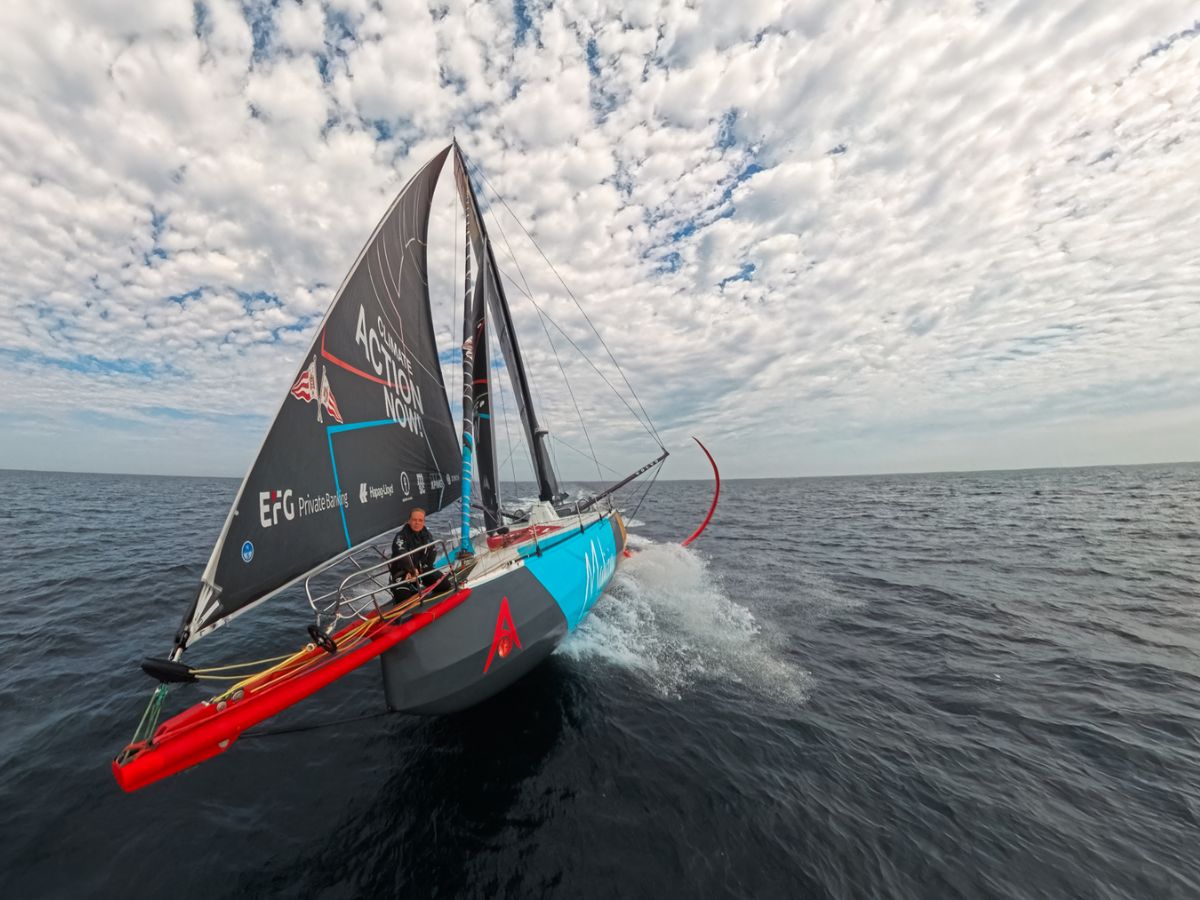
On Biotherm, Jack Bouttell admitted the last 24 hours had been draining: “After passing Denmark, we had a lot of tacks — really tiring. Last night the wind dropped, but we got through a little quicker than the routing predicted.”
For Paprec Arkéa, the ridge offered a chance to reset. “We’ve had some great transitions,” said Lobato. “Now the wind is down to 10 knots, but we’re keeping going.” Richomme added, “Medium winds aren’t our strong point, but we’ll keep pushing.”
Malizia’s Will Harris reported they were “flying home now” after a tricky transition that cost them a few miles: “It’s going to be a tense race until the very end.”
Canada Ocean Racing’s Christopher Pratt called the light airs “not brutal but enough to shake everyone. The upside is you can take proper naps after a hard-fought battle in the light winds.”
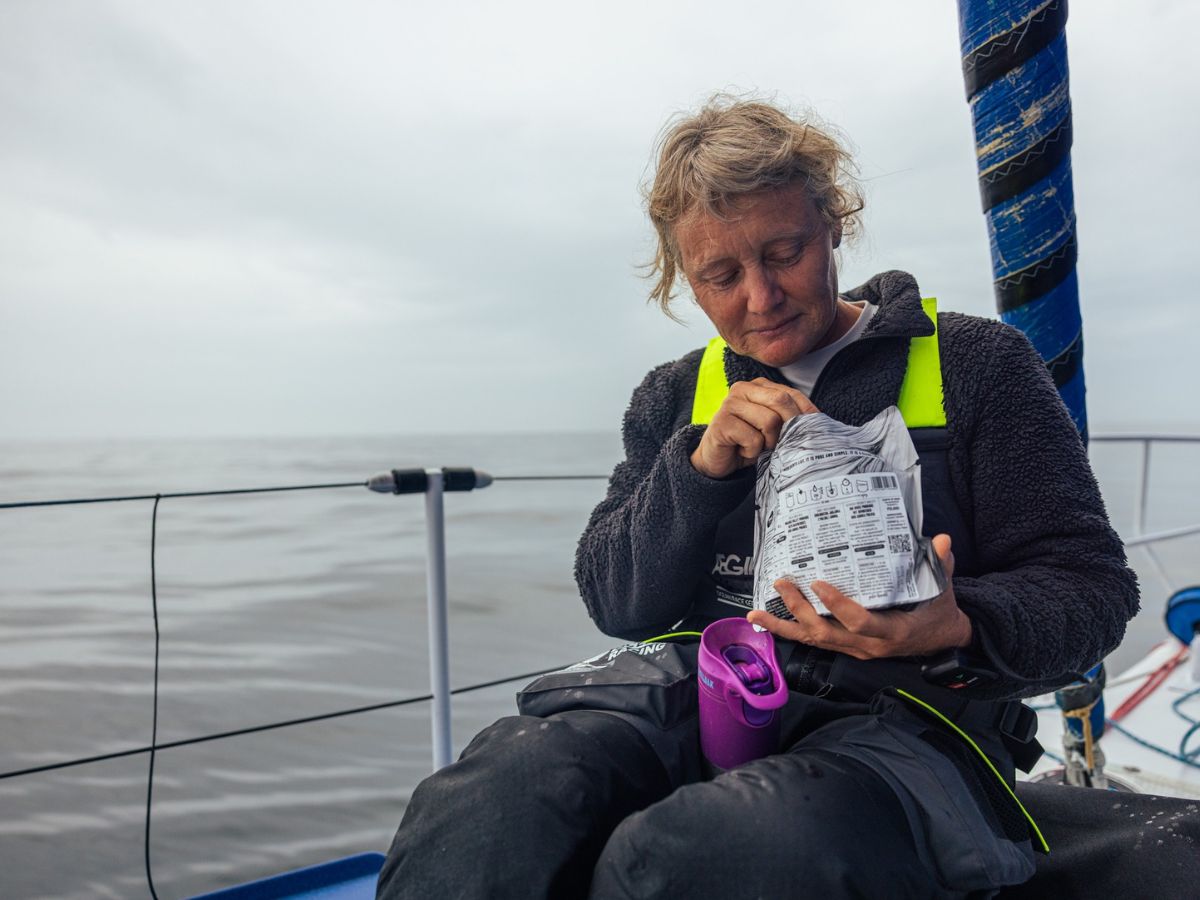
Amaala’s Roura admitted, “These aren’t our ideal conditions, but we sail seriously while keeping a joyful spirit.”
Slow grind south
Overnight and through to today, the ridge still dictated the pace. Speeds were low, manoeuvres minimal, and crews focused on trimming, weight shifts, and keeping morale high.
Paprec Arkéa’s report was upbeat despite two days of steady grind: “Smiles, manoeuvres, commitment — the mood is good.”
Canada Ocean Racing moved weight forward to reduce drag, while Amaala looked forward to more favourable breezes. “We don’t have the fastest boat,” Roura said, “but we optimise the route — and that saves us. Anything can happen before the finish.”
Closing on the Channel
Biotherm remains in control at the southern end of the North Sea, still managing the gap to Paprec Arkéa. Bouttell captured the crew’s mood: “Everyone gets along well, we joke and laugh. Yesterday we had a beautiful sunset with dolphins.”
The forecast shows the wind turning southeast, offering a fast reach into Portsmouth — but with heavy shipping traffic and Traffic Separation Schemes to navigate, the final miles will demand sharp tactics. With the top three still in striking distance, the first leg is far from settled.








